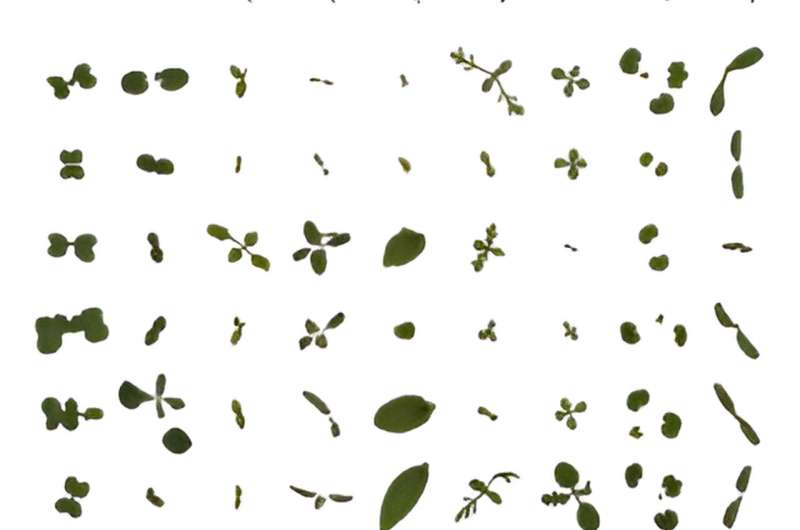This article has been reviewed according to Science X's editorial process and policies. Editors have highlighted the following attributes while ensuring the content's credibility:
fact-checked
trusted source
proofread
Advancing precision agriculture: GANs for high-fidelity synthetic weed identification

Meeting the growing food demand is a significant challenge, exacerbated by weed-induced crop production constraints. Conventional weed management methods, such as herbicides, have inadvertently fostered the emergence of resistant species, underscoring the imperative for precision agriculture approaches like site-specific weed management (SSWM). However, the success of SSWM, particularly when leveraging deep learning for weed identification, is hindered by limited, high-quality training data.
Generative models, notably Generative Adversarial Networks (GANs), offer a way to generate diverse weed data, improving plant classification and identification efforts. Nonetheless, a significant hurdle lies in generating synthetic images of high fidelity that faithfully represent weed species, highlighting the need for further refinement of these generative techniques tailored for agricultural applications.
In March 2024, Plant Phenomics published a research article titled "Channel Attention GAN-based Synthetic Weed Generation for Precise Weed Identification."
In this study, researchers explored the potential of Generative Adversarial Networks (GANs) for creating synthetic images of weeds, training models on both the sPSD benchmark and the auxiliary ISAS datasets, and comparing the results against cutting-edge models like WacGAN-info and SNGAN. Training was conducted on a GeForce RTX 3090 GPU, using the Adam optimizer and hinge loss for optimization, and adjusting the discriminator-to-generator training ratio to favor stability and convergence of the models.
The outcomes of the training process were encouraging, as evidenced by the loss metrics of both the generator and discriminator, which exhibited early convergence and stability. This suggests an effective equilibrium between the competing network components. The synthetic images generated by the CA-GAN model demonstrated a high degree of diversity and realism, outperforming other models in the generation of detailed and accurate plant features, such as leaf textures and shapes, while maintaining the distinctiveness of each weed species.
Evaluations conducted through visual inspections, class discriminability tests, and FID score assessments confirmed the superiority of the CA-GAN model. This model achieved impressive classification accuracies and produced synthetic images with a level of detail and realism that closely mimics actual weed species. The model's focus on plant features, enhanced by the channel attention mechanism, proved crucial in generating high-quality images that reduce the complexity introduced by variable backgrounds.
This study also ventured into controlling the visual continuity of weed growth stages through latent space manipulation, showcasing the potential for generating images that gradually change in appearance, which is beneficial for simulating different growth stages. However, achieving precise control over these changes remains a challenge, highlighting the need for further research in this area.
In conclusion, this research highlights the capabilities of GANs in the agricultural domain, specifically for generating synthetic weed images that could support weed management practices. The findings suggest avenues for future work, including refining growth stage control and improving the model's performance with small datasets, to further enhance the utility of GANs in precision agriculture and plant phenotyping.
More information: Tang Li et al, Channel Attention GAN-based Synthetic Weed Generation for Precise Weed Identification, Plant Phenomics (2024). DOI: 10.34133/plantphenomics.0122
Provided by NanJing Agricultural University




















